Related Research Articles

Sir Edwin Landseer Lutyens was an English architect known for imaginatively adapting traditional architectural styles to the requirements of his era. He designed many English country houses, war memorials and public buildings. In his biography, the writer Christopher Hussey wrote, "In his lifetime (Lutyens) was widely held to be our greatest architect since Wren if not, as many maintained, his superior". The architectural historian Gavin Stamp described him as "surely the greatest British architect of the twentieth century".

Campion Hall is one of the five permanent private halls of the University of Oxford in England. A Catholic hall, it is run by the Society of Jesus and named after Edmund Campion, a martyr and fellow of St John's College, Oxford. The hall is located on Brewer Street, between Christ Church and Pembroke College. The buildings, along with many of the fixtures and fittings, were designed by Sir Edwin Lutyens, his only buildings in Oxford. The hall also houses an extensive collection of religious art spanning 600 years; the pieces were collected primarily by Fr Martin D'Arcy in the 1930s.

Sir Basil Urwin Spence, was a Scottish architect, most notably associated with Coventry Cathedral in England and the Beehive in New Zealand, but also responsible for numerous other buildings in the Modernist/Brutalist style.
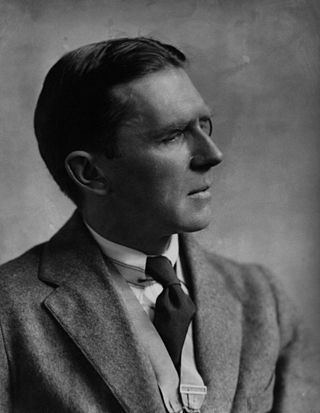
Sir Leslie Patrick Abercrombie was an English regional and town planner. Abercrombie was an academic during most of his career, and prepared one city plan and several regional studies prior to the Second World War. He came to prominence in the 1940s for his urban plans of the cities of Plymouth, Hull, Bath, Bournemouth, Hong Kong, Edinburgh, Clyde Valley and Greater London.
The year 1924 in architecture involved some significant architectural events and new buildings.
The year 1931 in architecture involved some significant events.
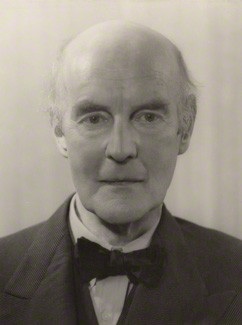
Sir Edward Brantwood Maufe, RA, FRIBA was an English architect and designer. He built private homes as well as commercial and institutional buildings, and is remembered chiefly for his work on places of worship and memorials. Perhaps his best known buildings are Guildford Cathedral and the Air Forces Memorial. He was a recipient of the Royal Gold Medal for architecture in 1944 and, in 1954, received a knighthood for services to the Imperial War Graves Commission, which he was associated with from 1943 until his death.
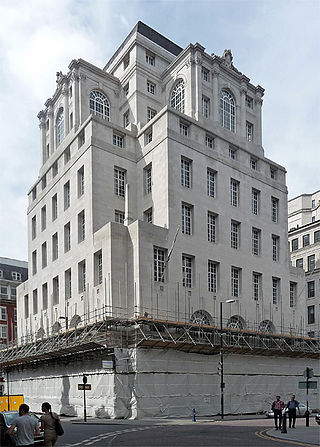
100 King Street, formerly the Midland Bank, is a former bank premises on King Street, Manchester, England. It was designed by Sir Edwin Lutyens in 1928 and constructed in 1933–35. It is Lutyens' major work in Manchester and was designated a Grade II* listed building in 1974.
Emanuel Vincent Harris, often known as E. Vincent Harris, was an English architect who designed several important public buildings in traditional styles.

Sir Herbert Baker was an English architect remembered as the dominant force in South African architecture for two decades, and a major designer of some of New Delhi's most notable government structures. He was born and died at Owletts in Cobham, Kent.

The Baroque Revival, also known as Neo-Baroque, was an architectural style of the late 19th century. The term is used to describe architecture and architectural sculptures which display important aspects of Baroque style, but are not of the original Baroque period. Elements of the Baroque architectural tradition were an essential part of the curriculum of the École des Beaux-Arts in Paris, the pre-eminent school of architecture in the second half of the 19th century, and are integral to the Beaux-Arts architecture it engendered both in France and abroad. An ebullient sense of European imperialism encouraged an official architecture to reflect it in Britain and France, and in Germany and Italy the Baroque Revival expressed pride in the new power of the unified state.

Henry Alexander Nesbitt Medd OBE FRIBA, was a British-born architect, whose career was made in India. He is most known for being in the team of architects, team led by Edwin Lutyens and Herbert Baker, which designed the new capital of India, New Delhi (1911–1931).Post inauguration of New Delhi, when most of architects left, he stayed on, designed many more buildings and eventually remained, Chief Architect to the Government of India (1939–47).
Robert Grant Irving is an author and lecturer specializing in the history of art and architecture of Britain and the British Empire. His book Indian Summer: Lutyens, Baker, and Imperial Delhi is the story of the creation of New Delhi from 1911 to 1931, the grandest architectural undertaking in the history of the British Empire. The principal architects were the two leading practitioners of the day, Sir Edwin Lutyens and Sir Herbert Baker. Irving's book won the British Council Prize in the Humanities as well as the highest honor of the Society of Architectural Historians, the Alice Davis Hitchcock Book Award.

Walter Sykes George CBE, FRIBA, ARCA, FIIA, FIFA (1881–1962) was an English architect active in India during the first half of the 20th century, most known for being part of the team of architects who designed New Delhi, the new capital of India, from 1911-1931.

Lutyens' Delhi is an area in New Delhi, India, named after the British architect Sir Edwin Lutyens (1869–1944), who was responsible for much of the architectural design and building during the period of the British Raj, when India was part of the British Empire in the 1920s and 1930s and 1940s. This also includes the Lutyens Bungalow Zone (LBZ).

Sunita Kohli is an Indian interior designer, architectural restorer and furniture manufacturer. She had restored and decorated Rashtrapati Bhavan, Parliament House Colonnade (1985–1989), the Prime Minister's Office and Hyderabad House in New Delhi.
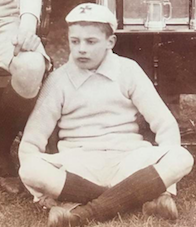
Robert Tor Russell (1888–1972) was a British architect. In his position as Chief Architect to the Public Works Department of the Government of India, he is primarily associated with the development of the city of New Delhi in the early 1930s. He designed some of the city's most notable buildings and was the architect of Connaught Place, the financial centre of the new capital. Russell also served with distinction during the First World War, and later, after retiring from India, became a civil servant for the British Government.
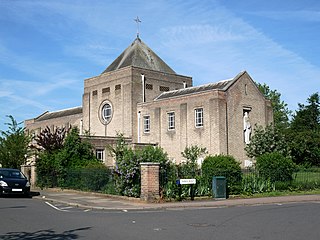
Cyril Arthur Farey (1888–1954) was a British architect and architectural illustrator. Known most widely for his detailed pencil and watercolour perspective depictions of architectural and engineering landmarks in the first half of the 20th century.
The Architecture of Delhi dates back more than a thousand years. As the capital of several great empires of India, including Rajput kingdom, Delhi Sultanate, Mughal Empire, and British Raj, the city of Delhi has been a centre for art and architecture.
Costelloe Lodge is an early 20th century building in Casla, County Galway, Ireland. It was designed by Edwin Lutyens for J. Bruce Ismay, chairman of the White Star Line, after Ismay's original fishing lodge was burnt out in an IRA attack in 1922. Ismay had bought the house a year after the Titanic disaster and, largely ostracised by society, spent much time at the lodge until his death in 1937. After the attack on the house Ismay engaged Lutyens to undertake a major reconstruction. The garden was laid out by Lutyens’ long-time collaborator Gertrude Jekyll. Little documented and unreferenced in the major studies of Lutyens, the lodge remains privately owned and is a protected structure.
References
- 1 2 3 Arthur Shoosmith (1888-1974), Artfact.com (attributed to Oxford Art Online ). Retrieved 2012-01-29.
- ↑ New Delhi Newsletter: Work by Lutyens's Office in New Delhi Archived March 23, 2013, at the Wayback Machine , The Lutyens Trust. Retrieved 2012-01-29.
- 1 2 Robert Fermor-Hesketh (Ed.), Architecture of the British Empire, Weidenfeld & Nicolson (1986), p. 184. ISBN 0-297-78526-5
- ↑ Jan Morris, Stones of empire: the buildings of the Raj, Oxford University Press (1983), p. 169, ISBN 0-19-280596-7
- ↑ "No. 33566". The London Gazette (Supplement). 31 December 1929. p. 9.
- ↑ Shoosmith, Arthur Gordon, Encyclopedia.com (from A Dictionary of Architecture and Landscape Architecture). Retrieved 2012-01-29.
- ↑ Arthur Gordon Shoosmith fonds, University of Waterloo Library (citing Grove Art Online). Retrieved 2012-01-29.